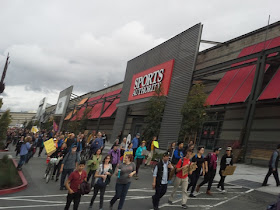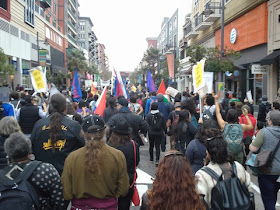Real Estate Transfer Tax Rains Money
on Emeryville
Emeryville's general fund received $3.4 million in calendar year 2015 under a new real estate transfer tax voted in by the electorate in November of 2014 according City Hall, an amount far exceeding what the City has hauled in during any other year for these transactions. The tax, called the Real Property Transfer Tax (RPTT), was dramatically increased when Emeryville voters passed 2014's Measures U&V that transformed the town into a 'charter city' that enabled the revenue increase on real estate transfers and was panned in the run up to the election by the business community and outside lobbying groups including the powerful Sacramento based California Association of Realtors.
 |
| Councilwoman Jac Asher Urged passage of the real estate transfer tax in spite of dire warnings from Sacramento lobbyists. |
Supporters of the Charter City Initiative, including its chief backer and progenitor Councilwoman Jac Asher, told voters before the November 2014 election much revenue could be gained by raising the tax rate and the numbers released last week tend to vindicate Ms Asher.
Emeryville had stood alone as a general law city among its charter city neighbors Ms Asher reminded voters and the City Hall had left some $21 million on the table with its former anemic 55 cent rate over the last few years.
 |
| Jason Crouch Real estate salesman and former Chair of the Emeryville Chamber of Commerce: If Emeryville voters approve this real estate transfer fee, "It's the beginning of the end for Emeryville". |
Voters soundly rejected incessant pleadings in the 2014 election from the NO side in the form of volumes of mailers from portions of the Emeryville business community and especially the California Real Estate Association who dumped more than $85,000 to defeat the two measures.
The money from the new tax, more than $300 for every woman, man and child in Emeryville, pays for among other things, sidewalk repair, park maintenance, street maintenance, landscaping and other needed infrastructure work.






















